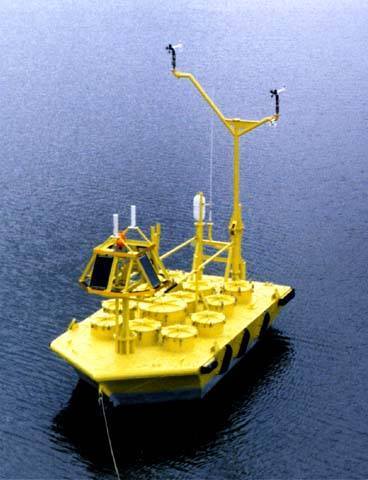July 14, 2015
Subject Loss of the Cape Canaveral Buoys
Dear Editor:
I learned last week that the NOAA’s National Data Buoy Center is planning to “dis-establish” (remove) both Cape Canaveral weather buoys. This means that in the spring 2016 buoy #41009 and #41010, the Canaveral and Canaveral East weather buoys will be gone. I spoke with the National Data Buoy Center, Stennis, MS. where Helmut Portman is Director. I was told me that these buoys are considered “special project” “NASA sponsored buoys” and “support by NASA was terminated.” I was also told that the official service notification on their website will be published in a few weeks.
Many users of this data (mariners, fishermen, scientists and other stakeholders) know that this buoy data is critical for the health and safety of all boats and ships, as well as, the general public. Surface wind, waves and water temperature data from these buoys are being used numerous times each day. The public has become dependent on these data. Boaters need the near-shore and offshore wind, wave and temperature conditions. In addition, I believe that these buoys are needed for models that evaluate hurricane formation potential and hurricane intensification as well. Presently there are no other offshore buoys off the east coast of Florida north of Miami, as the St. Augustine buoy was removed previously (Feb. 2014). Off Miami the Fowey Rock buoy has not been reporting data since January, 2015. In fact, around Florida there are only a few completely working buoys at all. Check http://www.ndbc.noaa.gov/maps/Florida.shtml and evaluate which buoys are working yourself.
NOAA has pushed Congress for more money to improve the models for hurricane development and intensification, as well as, for storm surge. The scientific and boating community know that the present generation of weather models need to be improved for determining offshore winds and waves in the resolution and reliability needed to support the health and safety of the citizens of our country. We also know that NOAA’s forecasts of wind, waves and hurricane intensification need to be calibrated and validated. This is best accomplished with real not synthesized data. Access to real-time weather data also affects foreign shipping and international trade as well.
Each year more buoys are removed or simply not repaired when failures of sensors occur. In my opinion this continued loss of infrastructure is a national disgrace. Other countries in the world are increasing the number of ocean buoys and the USA are reducing them. Other nations are providing subsurface temperature and current velocities in addition to their surface data. Yes, some of the US buoys do this on a limited basis. Most do not.
I would like for your readers to call or send an email to Helmut Portmann (228) 688-2805 Helmut.portmann@NOAA.gov) and the Administrator of NOAA Kathryn D. Sullivan (kathryn.sullivan@noaa.gov) and tell them you want more buoys not fewer ones. Tell them that the Cape Canaveral buoys are critical and ask them to guarantee that these buoys will not be retired and will be maintained. Do not accept the notion that these buoys are NASA’s. They are owned and maintained by NOAA as stated on the buoy website. The boating and fishing world depends on your support and strong action on this. If you do not stand up for these buoys, then the next buoy to go missing will be in your part of the ocean.
Safe and Successful Fishing.
Mitchell A. Roffer, Ph.D.
President
Above: What Buoy 41010 looked like when deployed 120mi off the coast of Cape Canaveral | Image Courtesy: www.wptv.com






